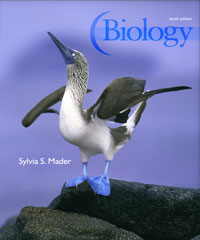Biology (Mader), 10th EditionChapter 32:
Circulation and Cardiovascular SystemsLearning OutcomesAfter studying this chapter, you should be able to accomplish the following outcomes.
Transport in Invertebrates
- Give examples of invertebrates that do not have a circulatory system and explain.
- Give examples of invertebrates that have an open circulatory system and contrast and open system with a closed system.
Transport in Vertebrates
- Show how structure of arteries, capillaries, and veins suits their function.
- Compare the circulatory circuits in vertebrates.
Transport in Humans- Describe the anatomy of the heart including its attached blood vessels.
- Describe the heartbeat, and relate it to the cardiac cycle.
- Trace the path of blood in the pulmonary and systemic circuits.
- Compare the velocity of blood and blood pressure in arteries, capillaries, and veins.
- Explain the movement of blood in veins.
- Relate the occurrence of hypertension to heart attack and stroke.
Blood, a Transport Medium
- List and discuss six functions of blood.
- Describe the composition of plasma and the structure and function of the formed elements.
- Describe blood clotting as a series of three main steps.
- Describe capillary exchange in the tissues.
- Explain who can give blood to whom, utilizing the ABO system and the Rh system.
 | 




